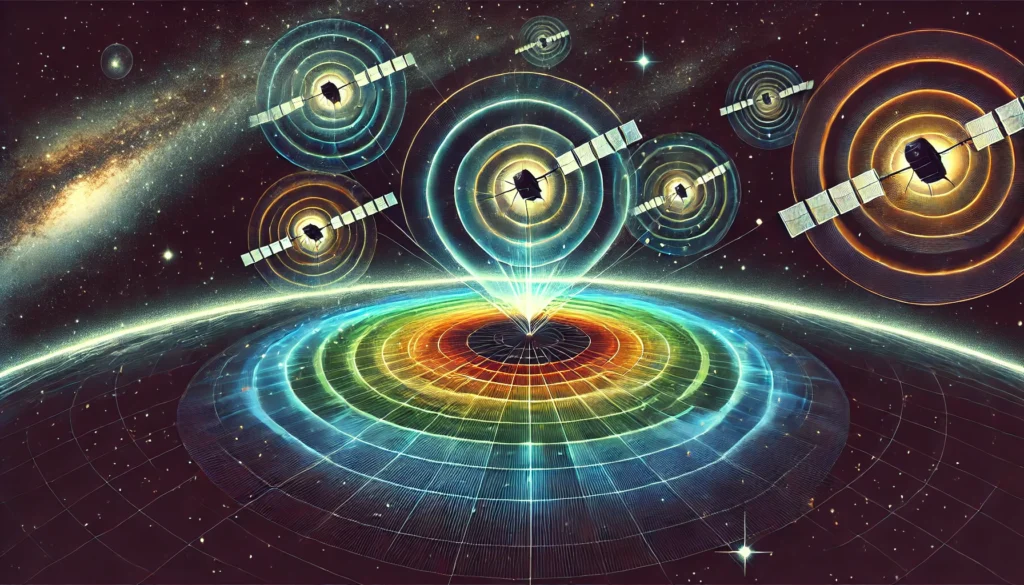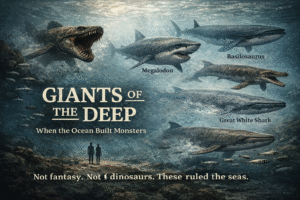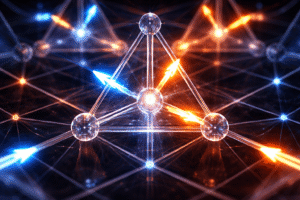In the quiet reaches of space, radio astronomers are tirelessly listening to signals that help us understand the universe. They study everything from distant stars to the mysterious echoes of the Big Bang. But today, this silent work is being disturbed by a new kind of interference. The rise of satellite constellations, such as Elon Musk’s Starlink, is causing a disruption in radio waves—a problem often referred to as “radio noise.” In this blog, we’ll explore how satellite interference is impacting radio astronomy and what this means for our understanding of the cosmos.
What Is Radio Astronomy?
Let’s start with the basics. Radio astronomy is the study of celestial objects that emit radio waves. Unlike the twinkling stars we see in the night sky, many astronomical phenomena are not visible to the naked eye. Radio telescopes, which are massive dish-like structures, help scientists detect and study these invisible waves. Radio waves can come from a variety of sources, including pulsars, black holes, and even the birth of new stars. The insights gained from this form of astronomy are essential for understanding the structure of the universe, the evolution of galaxies, and more.
Radio astronomy is unique because it requires complete silence in certain radio frequencies. Similar to how background noise can ruin a quiet conversation, even a small amount of interference can hinder the detection of faint signals from space.
The Rise of Satellite Constellations
The advent of satellite constellations, especially those deployed for global internet services, has changed the landscape of space. Companies like SpaceX, which operates Starlink, are launching thousands of small satellites into low Earth orbit (LEO) to provide high-speed internet to underserved regions. SpaceX is an American aerospace manufacturer and space transportation company known for its ambitious goals to revolutionize space travel and connect the world via satellite internet.
As of today, Starlink alone has launched over 6,000 satellites, and this number is expected to grow exponentially in the coming years. While these constellations bring valuable services, they also pose a significant problem for astronomers—especially those who rely on radio telescopes.

The ‘Radio Noise’ Problem
When satellites communicate with the Earth, they emit radio waves. These signals can overlap with the frequencies that radio astronomers use to observe space. This unintended overlap creates what’s known as “unintended electromagnetic radiation” (UEMR), also referred to as “radio noise.”
To put it simply, imagine trying to hear a soft whisper in a crowded room filled with shouting voices. That’s what radio astronomers are experiencing with satellite interference. The noise is drowning out the faint signals from distant galaxies and black holes that they’re trying to detect.
Real-World Example: Starlink’s Impact
One of the most striking examples of this issue is Starlink. While Starlink has revolutionized internet access in remote areas, it has simultaneously created a substantial challenge for radio astronomers. Studies have shown that Starlink’s second-generation satellites emit UEMR at levels up to 32 times brighter than those emitted by earlier satellite versions. This significantly impacts the ability of radio telescopes to capture faint signals from space.
In a study published in Astronomy & Astrophysics, it was found that this interference is essentially “blinding” radio astronomers. Cees Bassa, a scientist from the Netherlands Institute for Radio Astronomy (ASTRON), likened the problem to trying to spot a faint star next to the glaring light of a full moon. The brightness of Starlink satellites is overwhelming, causing an almost saturated view of the skies.
How Radio Interference Affects Scientific Discovery
The consequences of this interference are profound. Radio astronomy is responsible for some of the most groundbreaking discoveries in modern science. For instance, it helped confirm the existence of the cosmic microwave background (CMB), a relic radiation from the Big Bang that tells us about the early universe. Interference from satellites jeopardizes our ability to make similar discoveries in the future.
Astronomers also rely on radio telescopes to monitor phenomena like fast radio bursts (FRBs) and pulsars, which give clues about the nature of black holes and the fabric of space-time. Even a slight increase in radio noise could prevent us from detecting these signals, robbing science of vital data.
Regulatory Challenges and Solutions
As the number of satellites in orbit continues to grow, astronomers are calling for stricter regulations. But the problem is not just technical—it’s political. Space is a shared resource, but no one owns it. This creates a complex environment where governments, private companies, and scientific communities must work together to develop regulations that balance technological progress with scientific discovery.
Some experts have suggested that satellite companies like SpaceX could take steps to reduce the radio noise emitted by their satellites. For instance, the brightness of the satellites could be reduced or their orbits adjusted to avoid critical astronomical zones.
However, implementing these changes requires global cooperation. The United Nations Office for Outer Space Affairs (UNOOSA) has been actively discussing the need for new regulations, but change has been slow. Meanwhile, astronomers are forced to navigate a more crowded and noisy sky, limiting their ability to make important discoveries.
The Future of Radio Astronomy in a Satellite-Heavy Sky
What does the future hold for radio astronomy? While the situation may seem dire, there are potential solutions on the horizon. Some scientists are exploring the idea of placing radio telescopes on the far side of the moon, where they would be shielded from Earth-based radio interference. This would allow astronomers to continue their work without the disruptions caused by satellite constellations.
Another possibility is for satellite companies to collaborate with the scientific community. Open communication and shared goals could lead to innovations that reduce interference while still allowing satellite internet to expand.
However, for these solutions to become a reality, there needs to be more awareness and action. Governments must work with companies like SpaceX to ensure that space remains accessible for both technological and scientific purposes. If left unchecked, the rise of satellite constellations could permanently damage our ability to explore the universe through radio astronomy.
Conclusion
The ‘radio noise’ problem is a pressing issue for the scientific community. As satellite constellations continue to grow, the interference with radio astronomy will only become more pronounced. It’s a situation that requires global cooperation, innovative solutions, and a balance between technological progress and scientific discovery. If we can find a way to reduce satellite interference, radio astronomers will continue to unlock the secrets of the universe, helping us better understand the cosmos.
Author’s Note
As our world becomes more interconnected through technology, we must ensure that we don’t lose sight of the importance of scientific discovery. Radio astronomy has given us some of the greatest insights into our universe, and we owe it to future generations to protect this field of study.
G.C., Ecosociosphere contributor.
References and Further Reading
- Radio astronomy glossaries and terms. https://en.termwiki.com/product_category/Radio_astronomy
- What Is The Compact Muon Solenoid Used To Study – Android62. https://android62.com/en/question/what-is-the-compact-muon-solenoid-used-to-study/
- Mangel, A. (2022). Trustworthy Analysis of Recent Debris Cloud Conjunction Events Using an Adaptive Monte Carlo Forecasting Platform. https://core.ac.uk/download/527738573.pdf
- Kearney, J. J. (1989). Report of NASA Lunar Energy Enterprise Case Study Task Force. https://core.ac.uk/download/pdf/42825165.pdf





Comments
I very delighted to find this internet site on bing, just what I was searching for as well saved to fav